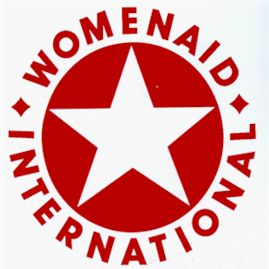Sub-Saharan Africa
Poverty, wars and the presence of military troops are the major underlying factors driving the commercial sexual exploitation of children in Africa. The many wars in the continent have weakened family structures and supports, with families left to fend for themselves because the men have been conscripted into armies. Civil strife has meanwhile destroyed subsistence systems. Vast numbers of refugees and internally displaced people have been forced across hostile territories and into precarious situations on the very margins of existence. Structural adjustment programmes have siphoned funds away from the social sector, increasing economic and social hardships. In many cases, adults and children have been left with few, if any, alternatives to exchanging sex for food, money and even relief supplies. The vulnerability of children in refugee camps or recruited as soldiers or in other work among armed contingents is high.
Another factor fuelling sexual exploitation is the generally low status of girls and women in the continent. 'In kind' exchanges, such as the payment of bridge price involving child bridges, is considered a regional form of commercial sexual exploitation. Older men referred to as 'sugar daddies' commonly provide girls with money for school fees, books or clothes in exchange for sex. Incest and sexual abuse within the family is a major contributing factor. Sexual exploitation of domestic help is also common.
Because of the HIV/AIDS pandemic, there will be many AIDS orphans in the region by the year 2000. It can be predicted that many will be forced to earn a living on the streets through prostitution. Major cities, such as Addis Ababa, Johannesburg and Nairobi, already have concentrations of children surviving on the streets. Many resort to prostitution, often influenced by friends and peers.
Another pattern discernible in Africa is the movement of men away from their communities and families in the countryside to seek work in cities or mining areas. The sexual exploitation of children by large populations of single men is especially acute along truck routes in Kenya, in fishing villages in Sierra Leone and in mines in South Africa.
Data studies
In Angola, a recent Christian Children's Fund study found a visible increase in child prostitution, especially among very young girls called catorzinhas, literally translated as 'little 14-year-olds', even though girls as young as 11 have been identified.
Sexual exploitation of girls has increased in Ethiopia since 1990. The country has a long-standing history of girls and women supporting the family. Limited occupational options in rural areas force female migration to cities such as Addis Ababa, where the difficulties of finding employment coupled with the costs of living leave them vulnerable to sexual exploitation.
In Kenya, child prostitution is primarily a street-based phenomenon, with many girls involved in selling and begging during the day and switching to prostitution at night. The Kenya Child Welfare Society has noted that some children create their own brothels; others are operated by adult prostitutes in bars and restaurants. Tourists are preferred customers because of the greater possibility of good pay and other favours.
In Liberia, which has been ravaged by civil war since 1989, a 1995 study by Save the Children identified children as young as 10 being sexually exploited by soldiers at military bases. It also found that, while most parents did not tolerate prostitution, some parents encouraged girls to begin sexual activity at an early age to help support other members of the family. The study emphasised that the cultural values and norms that had bound communities and protected children had eroded as people had been forced to seek refuge in unfamiliar, overcrowded urban areas.
In 1996 ECPAT study on South Africa revealed a growing number of girls aged between 12 and 16 years soliciting on the streets and in the dock areas of Cape Town and Durban. The study also showed that there is an increase in businesses catering to child sex exploiters.
In Zambia, it is estimated that there are 70,000 children who are forced to live and work on the streets. According to the NGO Tasintha, most of the child prostitutes are daughters of prostitutes, orphans or children in especially difficult circumstances. The incidence of HIV/AIDS among girls in the 15-19 age group is 7 times higher than that for boys in the same age group.


